“I know I’m one of the lucky ones. Indeed, sheltering in place has made me double down on what I had been doing before all this started.”
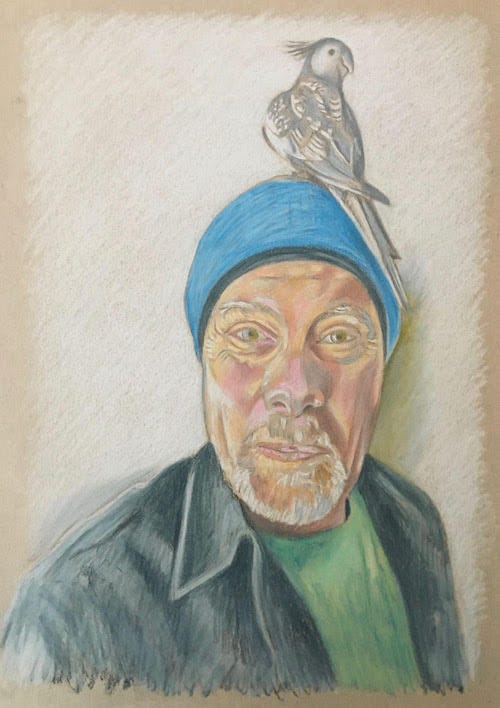
Editors’ Note: In ordinary times, Jonathan Machen, fifty-six, lives and works just outside Boulder, Colorado. With a recent solo show at the Museum of Boulder, this might have seemed exactly the wrong moment to have to cut off social contact.
But Jonathan reports that the pandemic has given him time and space in which to complete several projects, including a series of portraits of people important to him. Those portraits sometimes commemorate deaths, including one from COVID-19. His landscapes record the beauty of places from which Jonathan draws inspiration and strength, as well as sites for environmental activism and preservation.
Much of his work addresses political issues, as in the first picture he contributed to Broad Street, “Unite with Love, Resist with Love.” Physical isolation is no reason to stop pushing for social and environmental improvements. That is, after all, how the next pandemic might be avoided.
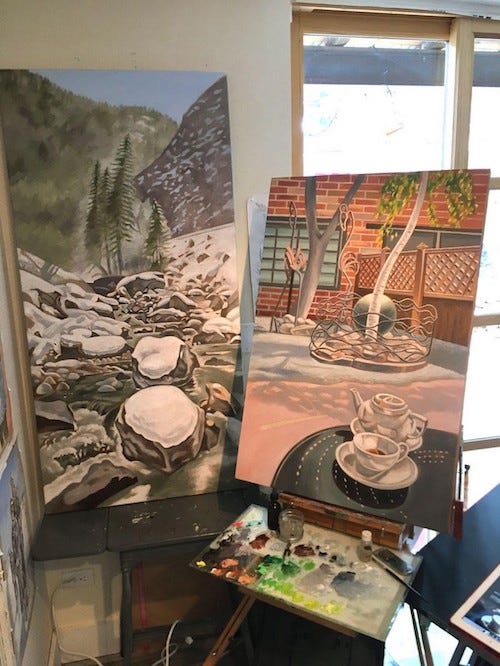
Jonathan
I’ve been lucky during this pandemic to be able to work both from home and at a studio I rent in Eldorado Springs, about half an hour away. Since the studio is closed to the general public, it feels like a safe and “essential” place to go, where I have a room to myself, and so I have been availing myself of this space for work on larger oil paintings.
Except for my weekly shopping forays, running in the hills above my house, and my regular disappearance to the studio, my family and I are cozy in our 1200-square-foot house in the midst of Fourmile Canyon, so I can’t complain. I know I’m one of the lucky ones. Indeed, this sheltering in place has made me “double down” on what I had been doing before all this started.
My work during the pandemic has vacillated between doing portraits, landscapes from life, and landscapes from photos, as well as washing dishes, cleaning the house, and working on a number of house projects that languished under the normal rush of our lives.
For the paintings in the studio I am using oil on canvas. The paintings are based on pen-and-ink drawings I’ve done on location, and the portraits are based on photos.
For the landscape drawings, I do a plein-air drawing on location using an easel, which takes me about two hours — getting the essentials of perspective and value — then I finish the drawings off in the studio using chalk pastel.
Portraits
A friend of mine, Bob Teitler, recently died after complications from Covid-19, and my father-in-law (John Wild) also passed away right before this all started, though not from Covid. Consequently, I have done portraits of the both of them.
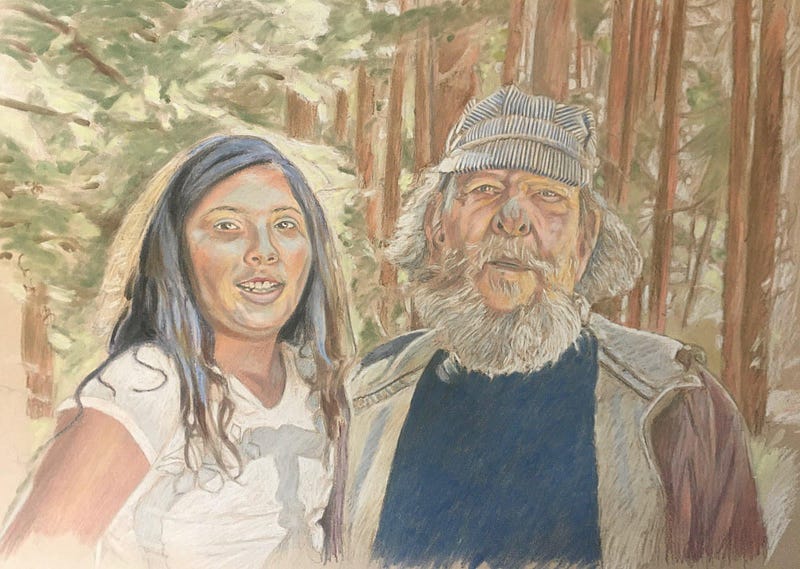
Bob Teitler, originally from New York, re-settled his family in the the Gunnison Valley of Colorado in the 1970s, and ended up supporting families down in Guatemala by exporting over a million hackey-sacks to sports retailers in the United States. A second marriage to Canadian-born Maya Kartha, whom Bob met in Belize, blessed him with another child, Sophie, now in high school in Gunnison. Maya passed away after a two-year bout with cancer in 2007.
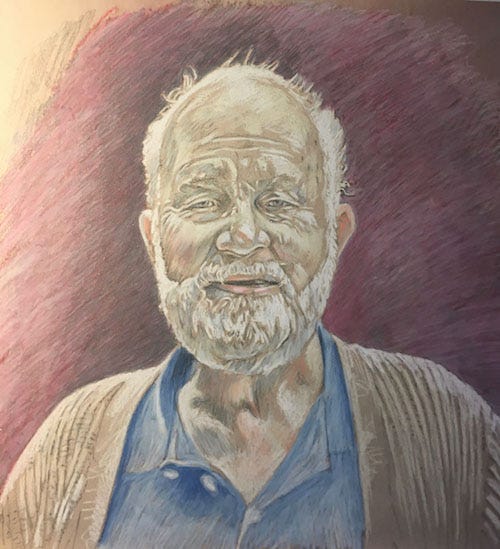
John Wild (above) loved his off-the-grid cabin in Mendocino, California, where he took his grandkids for rides in the all-terrain vehicle he called the Gator. This chalk pastel of him on his Gator is one of three portraits I did of him to commemorate his life.
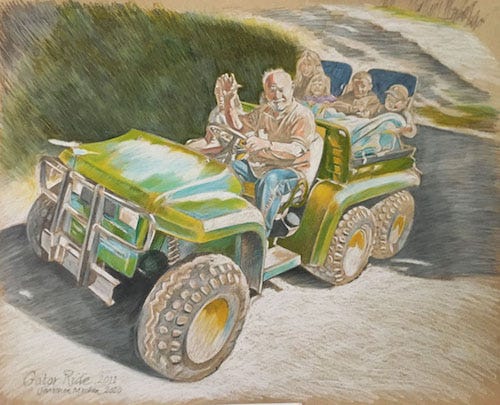
Time in isolation has also been time to engage in politically motivated artwork. The portrait of Bunky Echo-Hawk, recently completed, draws attention both to Bunky’s outspoken advocacy for his Native American community and to the Morrill Act of 1864 and its connection to Land-Grant universities.
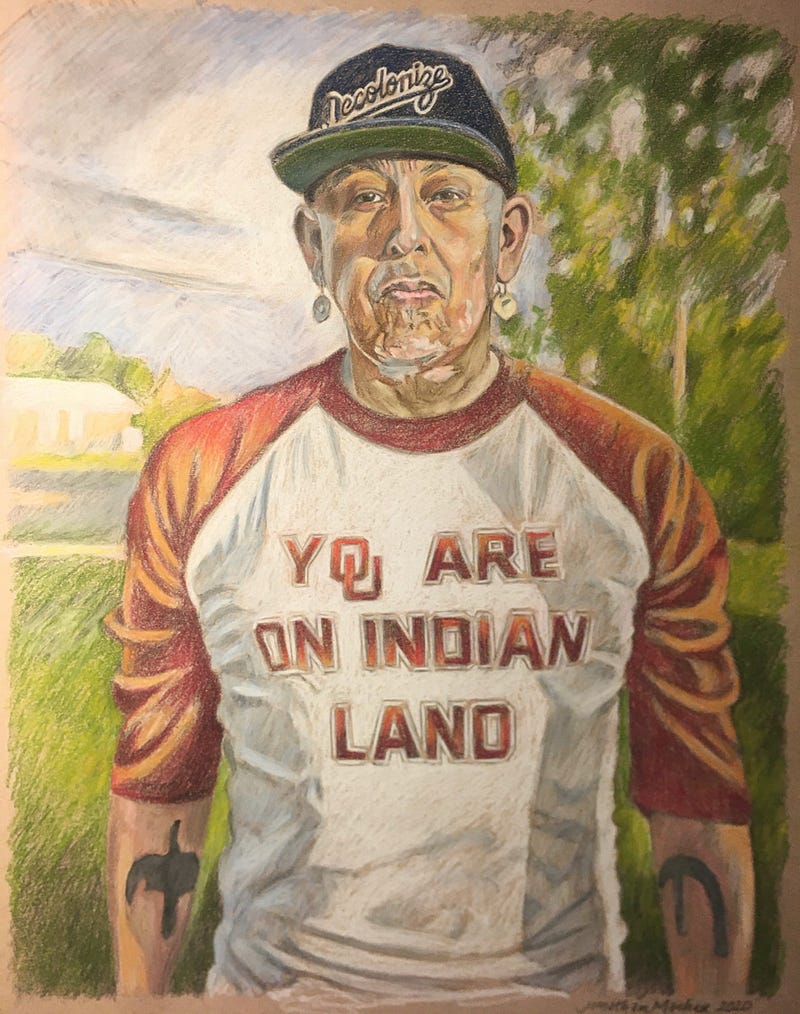
I first met Bunky in 2003, when I produced and hung a show of his paintings at the Solstice Center in Boulder. He has gone on to raise much awareness around indigenous rights through his art, live-painting demonstrations, and product design. Many people are familiar with President Abraham Lincoln’s historic Homestead act of 1862, which offered farmland to settlers willing to occupy it for 5 years. But the day after this act was signed, another one, the Morrill Act, was also signed into law: “An act donating public lands to the several states and territories which may provide colleges for the benefit of agriculture and the mechanic arts”. What the Morrill Act did was to legitimize the distribution of Indian lands — nearly 11 million acres — to university endowments across this country.
Many universities will find it challenging to confront the narrative of the origination of the wealth for their schools in relationship to the Morrill Act. Hopefully the conversation around this will begin to illuminate the full picture and lead to changes moving forward.
Landscapes and New Approaches
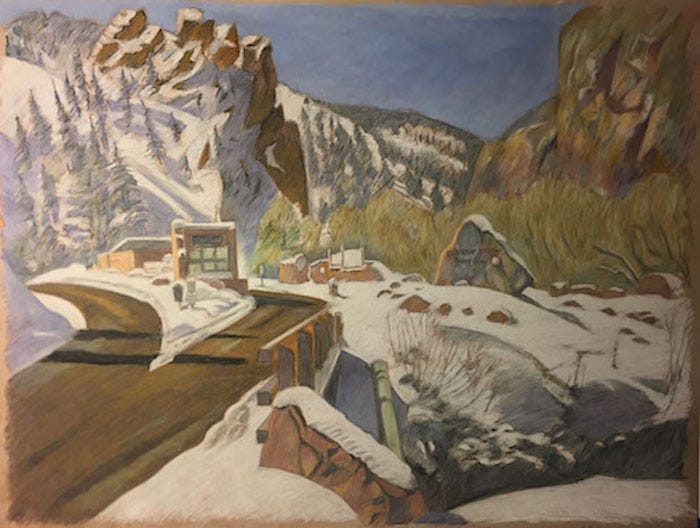
In this past month, I’ve done three plain-air pencil-and-chalk drawings from Eldorado Springs: the entrance to Eldorado Canyon State Park (above); the Art Center where I am working; and the gas station about three miles from town, where the owner has offered wall space to hang my work (see below).
I spent about two hours drawing each on location, and then finished up the color notes in the studio.
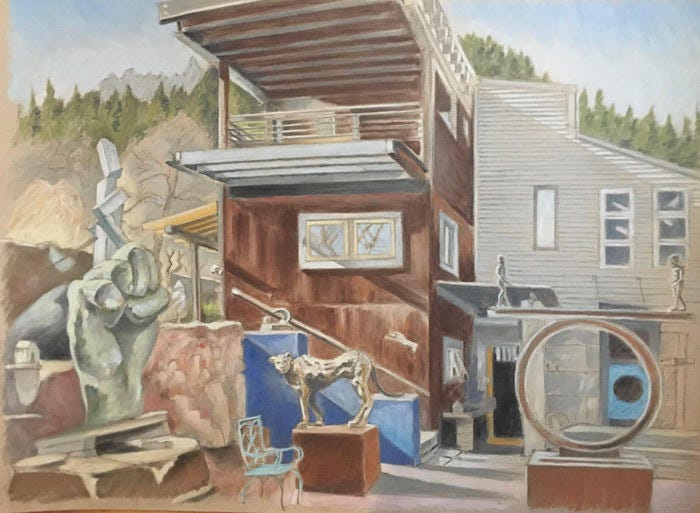
Another approach to landscape that I have been experimenting with during this time is drawing from photos that I have taken. One example during this period, is “Los Alamos, Main Hill Road” shows the main artery into and out of the town that I grew up in, under the grand vista of the Sangre de Cristo mountain range.
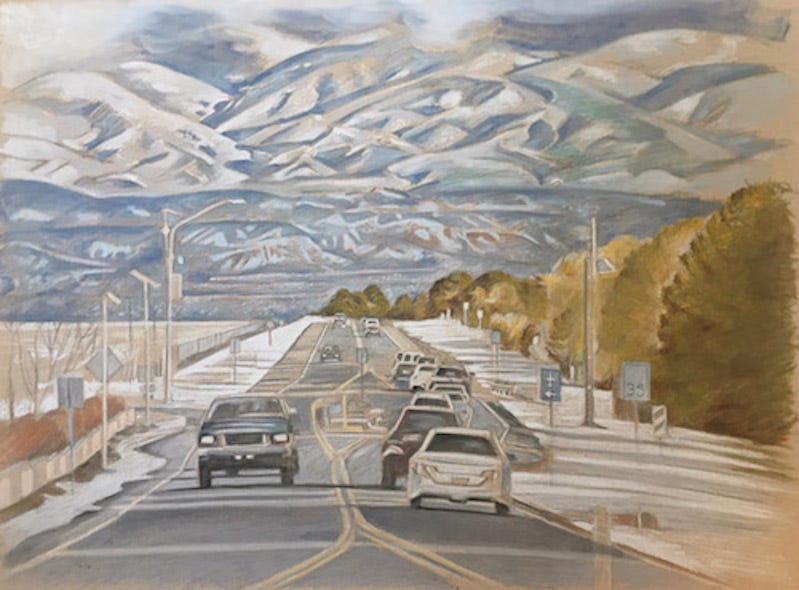
This picture is significant to me in that the road and the mountains are viewedfrom a place I walked all the time when I lived in Los Alamos — specifically when I was going down to East Park Pool, an important place for our family. We had a membership there, and I also worked there for awhile. One must cross the Main Hill Road to get to the pool from our house. When I took the photo on which I based this drawing (Dec 27 2012), I was walking with my kids, then ages five and six. Old, familiar landscapes sometimes have a different resonance when with the new generation.
Eldorado Corner Market and Gas Station
I’m glad that even in a time of social distancing, I have a place to exhibit my work. Eldorado Corner Market and Gas may not be where you expect to find drawings and paintings hung like this, but the installation shows an expanding idea of art in a changing time.
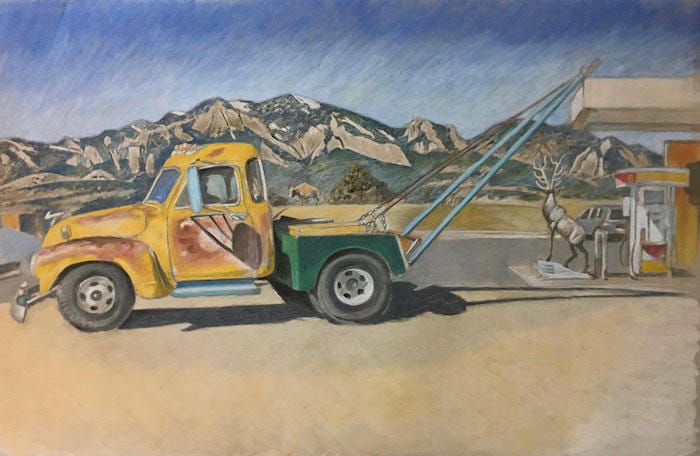
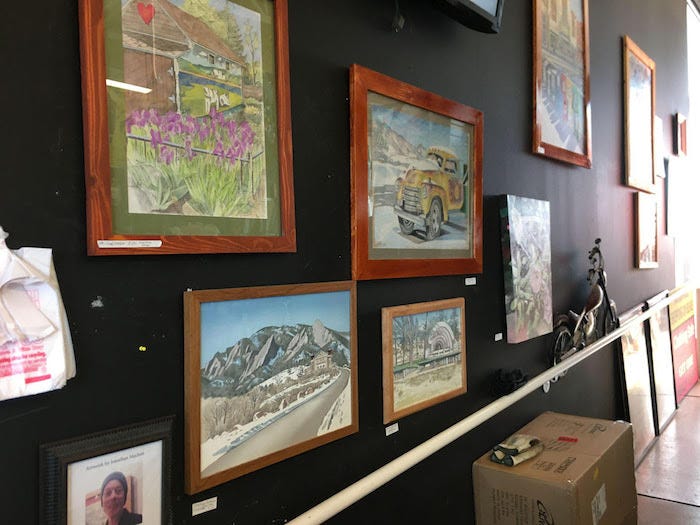
***********************************************************
You can find more of Jonathan’s work — both pre- and post-quarantine — on his website, jonsportraits.com. He also shares new work on Instagram, where his handle is @jonathanmachen.
This feature also appears, in slightly different format, on our blog on Medium.








